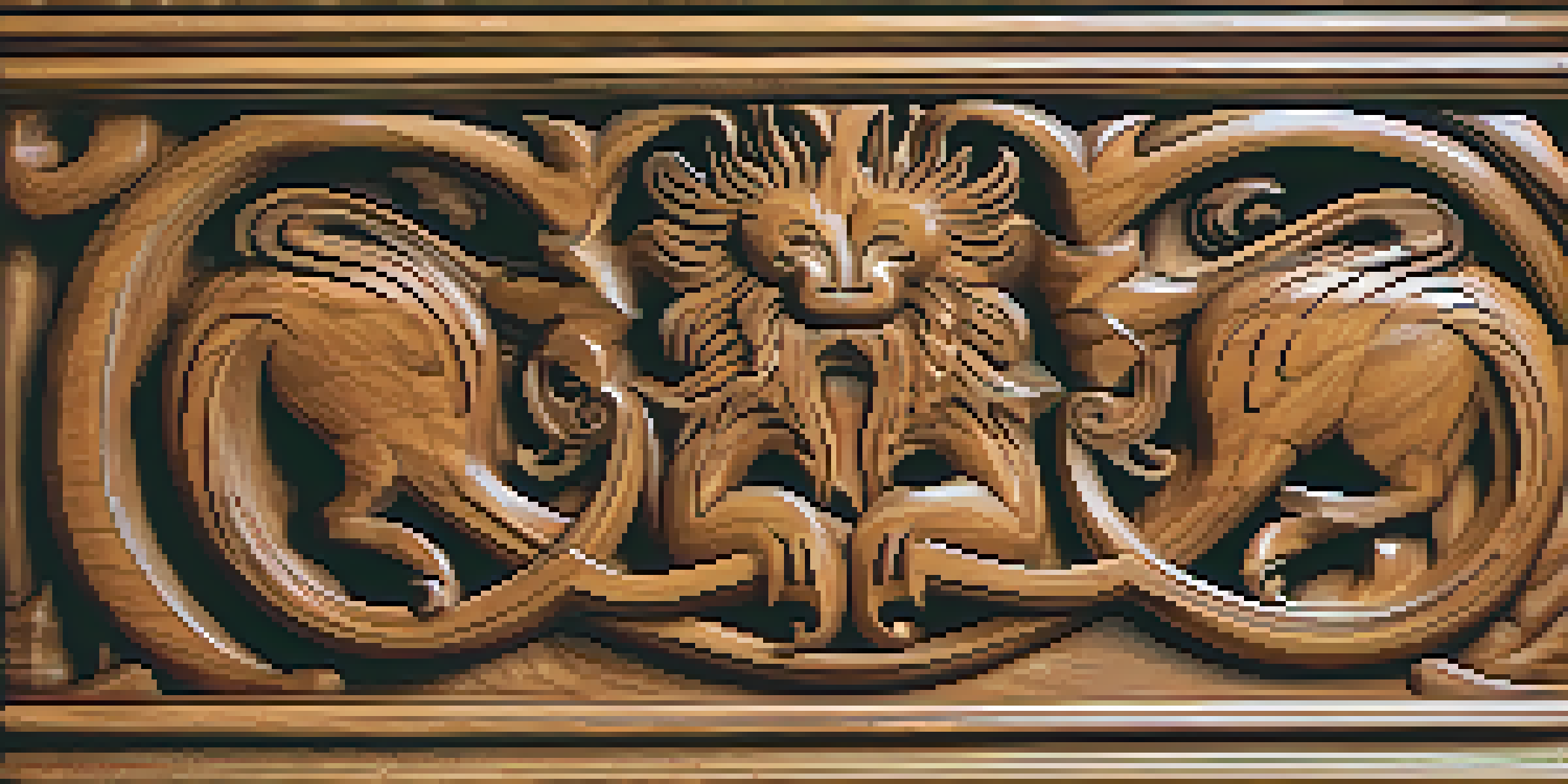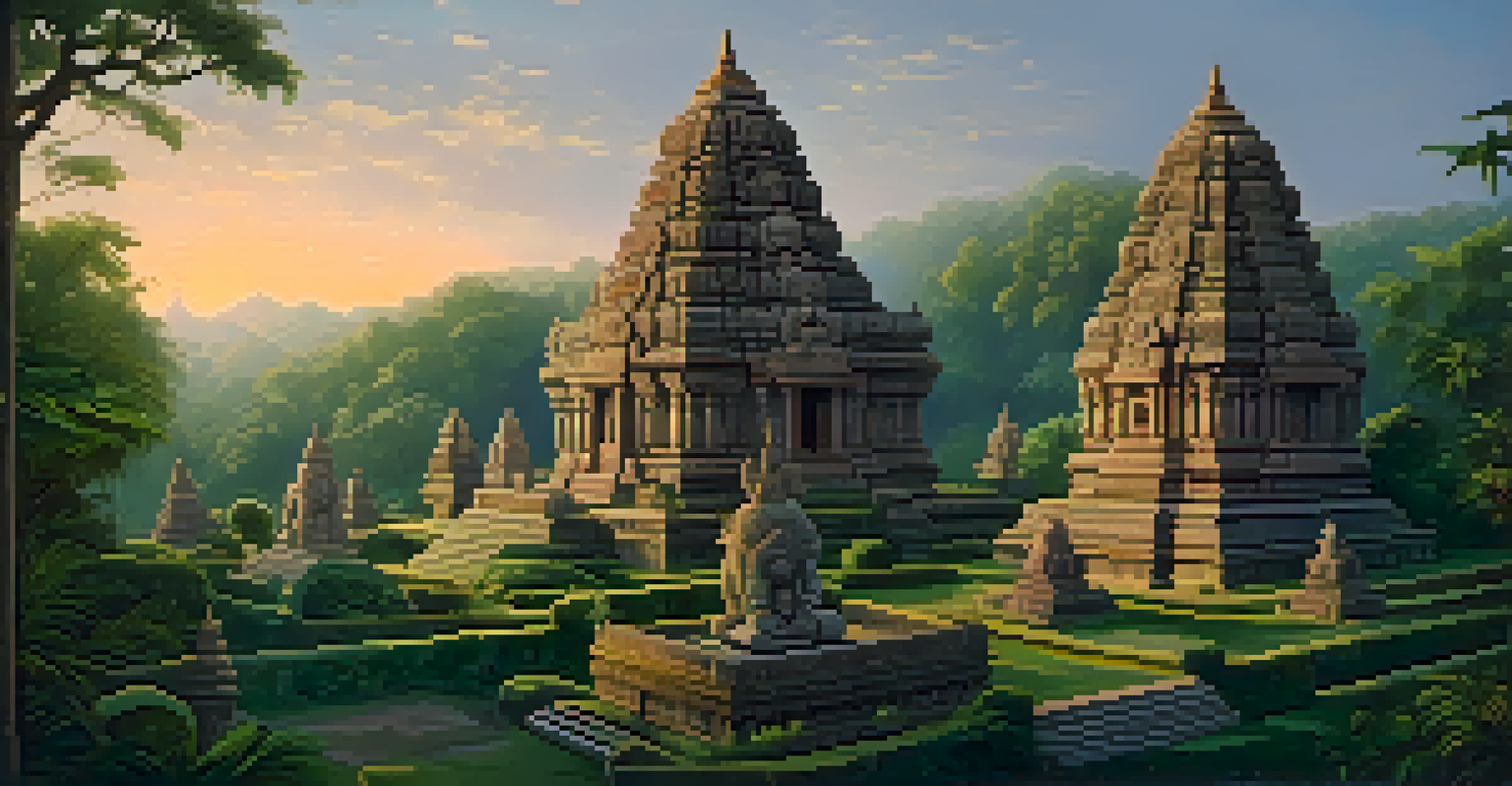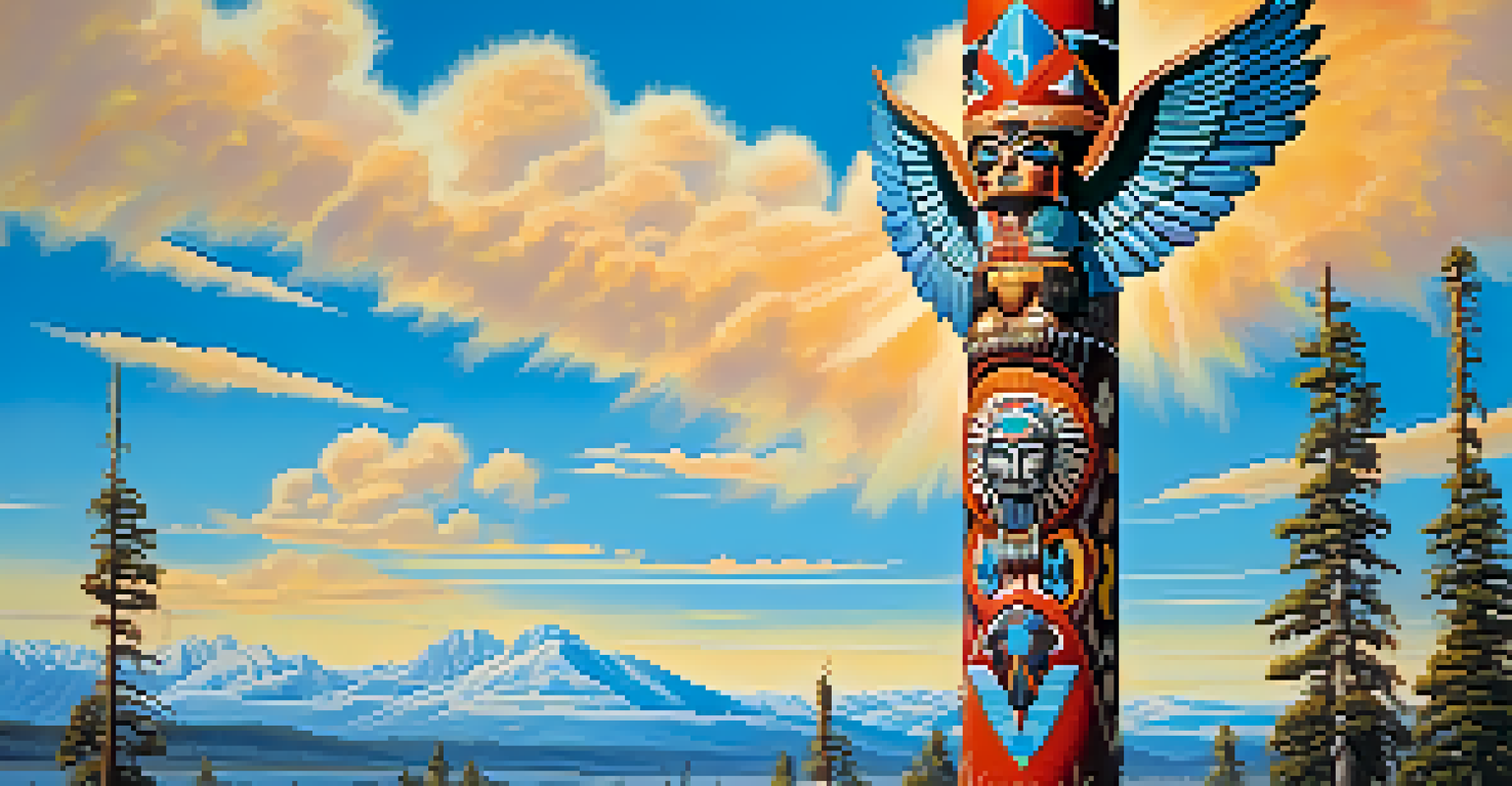Mythology and Carving: Telling Legends Through Art

The Intersection of Mythology and Artistry in Carvings
Mythology and artistry have danced together for centuries, creating a rich tapestry of cultural narratives. Carvings, in particular, serve as a powerful medium to express these timeless tales. From ancient civilizations to modern artisans, the act of carving has been a way to preserve and share legends that define our humanity.
Art is the most beautiful of all lies.
Every chisel stroke tells a story, capturing the essence of gods, heroes, and mythical creatures. For instance, the intricate designs found in ancient Greek temples not only showcase architectural brilliance but also narrate the adventures of gods like Zeus and Athena. This blend of storytelling and craftsmanship forms a unique bridge between past and present.
As we delve deeper into this art form, we uncover how these carvings resonate with emotions and lessons that transcend generations. The beauty of carving lies in its ability to evoke feelings, making legends come alive in a tangible way, inviting viewers to connect with the stories depicted.
Cultural Significance of Carving Myths in Different Regions
Across various cultures, the act of carving myths holds significant meaning and purpose. In Africa, for example, the intricate wooden masks often depict ancestral spirits and deities, serving not only as artistic expressions but also as tools for spiritual connection. These carvings play a vital role in rituals and ceremonies, emphasizing their importance in community life.

Similarly, Native American totems tell stories of clans and their relationships with nature, each carving symbolizing different aspects of life and belief. These carvings are more than mere decorations; they serve as historical records and moral lessons, reflecting the values and traditions of the people.
Carvings as Cultural Narratives
Carvings serve as powerful mediums that preserve and express cultural myths and narratives across various societies.
In Asia, stone carvings on temples depict elaborate narratives from Hindu and Buddhist mythology, inviting worshippers to reflect on their faith. Here, art becomes a way to engage with the divine, illustrating how mythology and carving can intertwine to enrich spiritual practices across cultures.
Techniques and Tools: The Craft of Carving Myths
The craft of carving is an intricate process that requires skill, patience, and a deep understanding of the material. Traditional tools like chisels and mallets have been used for centuries, each tool serving a specific purpose in bringing myths to life. For instance, a larger chisel may remove bulk material, while finer tools add delicate details to express emotion and movement.
The purpose of art is not a rarified, intellectual distillate; it is life, intensified, and displayed.
Modern techniques have also evolved, incorporating power tools that enhance the precision and speed of the carving process. However, many artisans still prefer hand-carving, believing it adds a personal touch and authenticity to their work. This blend of traditional and modern methods reflects the ongoing dialogue between past practices and contemporary artistry.
Regardless of the tools used, the essence of carving myths remains the same: to capture stories in a way that resonates with viewers. Each piece, whether carved from wood, stone, or ivory, carries with it the artist's interpretation of a legend, inviting the audience to experience the narrative in a new light.
Famous Carvings and Their Mythological Stories
Throughout history, certain carvings have gained fame for their intricate designs and rich narratives. The Parthenon in Athens, adorned with stunning reliefs, tells the story of the gods and their interactions with mortals, showcasing the prowess of ancient Greek craftsmanship. Each panel narrates a tale, inviting viewers to ponder the significance of these myths.
In India, the intricate carvings found in the temples of Khajuraho depict various deities and aspects of life, including love, nature, and spirituality. These sculptures not only reflect the artistic excellence of their time but also serve as visual representations of the myths that have shaped the culture. Visitors marvel at how these works of art encapsulate complex stories and beliefs.
Techniques Blending Tradition and Modernity
Modern artisans combine traditional carving techniques with contemporary themes and tools, enriching the storytelling aspect of their work.
Moreover, the iconic Easter Island moai statues stand as a testament to the Rapa Nui people’s connection to their ancestors and deities. Each statue, while primarily a representation of a revered figure, also tells a broader tale of cultural identity and history, emphasizing the deep-rooted connection between carving and mythology.
How Carving Myths Helps Preserve Cultural Heritage
Carving myths plays a crucial role in preserving cultural heritage, acting as a visual archive of stories that might otherwise fade away. These artworks often encapsulate the beliefs, values, and experiences of a community, ensuring that the essence of their culture is passed down through generations. By carving these narratives, artisans create lasting records of their people's history.
In many cases, carvings have become symbols of identity and pride for communities. For example, the Maori carvings in New Zealand reflect the tribe's history, ancestry, and connection to the land. These pieces not only celebrate cultural identity but also foster community cohesion, reminding individuals of their shared heritage.
Additionally, as globalization encourages cultural exchange, carved myths serve as a means of maintaining uniqueness in a rapidly changing world. They invite exploration and appreciation of diverse cultures, encouraging dialogue that honors the past while embracing the future.
The Role of Modern Artisans in Mythological Carving
Today's artisans continue the tradition of carving myths, often blending age-old techniques with contemporary themes. Many artists draw inspiration from classic mythology while infusing their work with personal experiences and modern interpretations. This approach not only keeps the art form alive but also makes it relevant to current audiences.
Artisans today also face the challenge of balancing authenticity with innovation. While some strive to preserve traditional styles, others experiment with new materials and concepts, creating a dialogue between the past and the present. This evolution enriches the art of carving, ensuring that it remains dynamic and engaging.
Digital Age Impact on Carving
The digital age influences the future of mythological carving, allowing artists to integrate technology while preserving the essence of their craft.
Moreover, modern artisans often use their platforms to educate others about the significance of mythology in their art. Through workshops and exhibitions, they share stories behind their carvings, fostering a greater understanding of how these legends shape cultural identities and community values.
The Future of Mythological Carving in a Digital Age
As we move further into the digital age, the future of mythological carving is being shaped by technology. Digital tools allow artists to experiment with designs and visualize their work in ways that traditional methods cannot. However, this shift also raises questions about the preservation of craftsmanship and the intimate connection between artist and material.
While some may fear that technology could overshadow traditional carving, many artisans are finding ways to integrate both worlds. For example, 3D printing technology is being used to replicate intricate carvings, allowing for wider access to these artworks while still honoring the original craftsmanship. This blend of old and new can expand the reach of mythological stories.

Ultimately, the future of mythological carving lies in the hands of the artists who navigate these changes. By embracing technology while holding onto the essence of storytelling, they can continue to keep ancient myths alive, ensuring that these legends are not only told but also felt in the hearts of future generations.